Physical Address
304 North Cardinal St.
Dorchester Center, MA 02124
Physical Address
304 North Cardinal St.
Dorchester Center, MA 02124
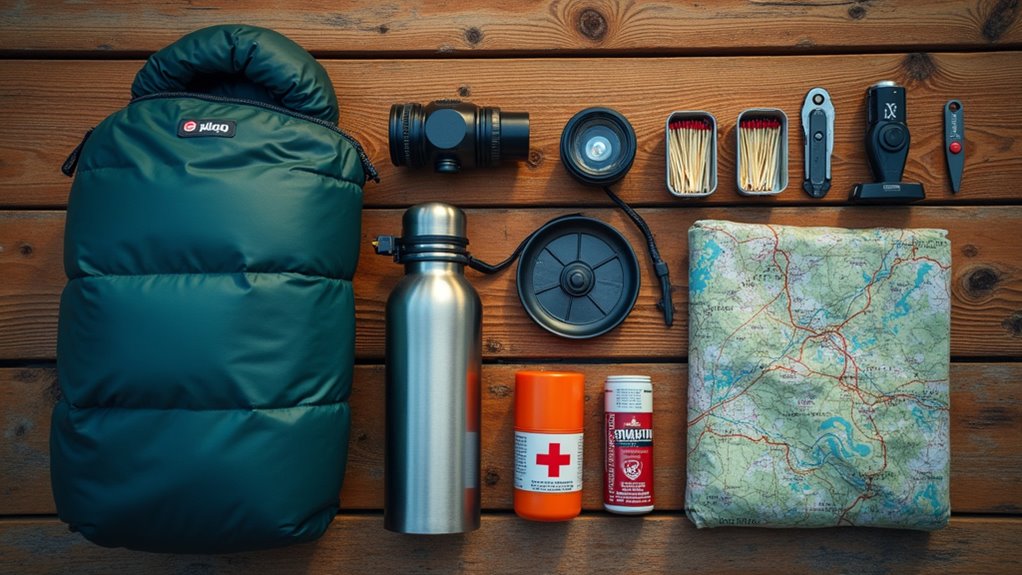
Proper camping preparation prevents disasters that force thousands to abandon their outdoor adventures early—discover which critical mistakes you're probably making.
You’ve probably experienced that sinking feeling when you realize you forgot something essential halfway to your campsite. Whether it’s dead batteries in your flashlight or discovering your tent has a torn rainfly during the first downpour, poor preparation can quickly turn your outdoor adventure into a frustrating ordeal. The difference between a memorable camping trip and a disaster often comes down to how well you’ve planned ahead. Here’s what separates prepared campers from those who end up cutting their trips short.
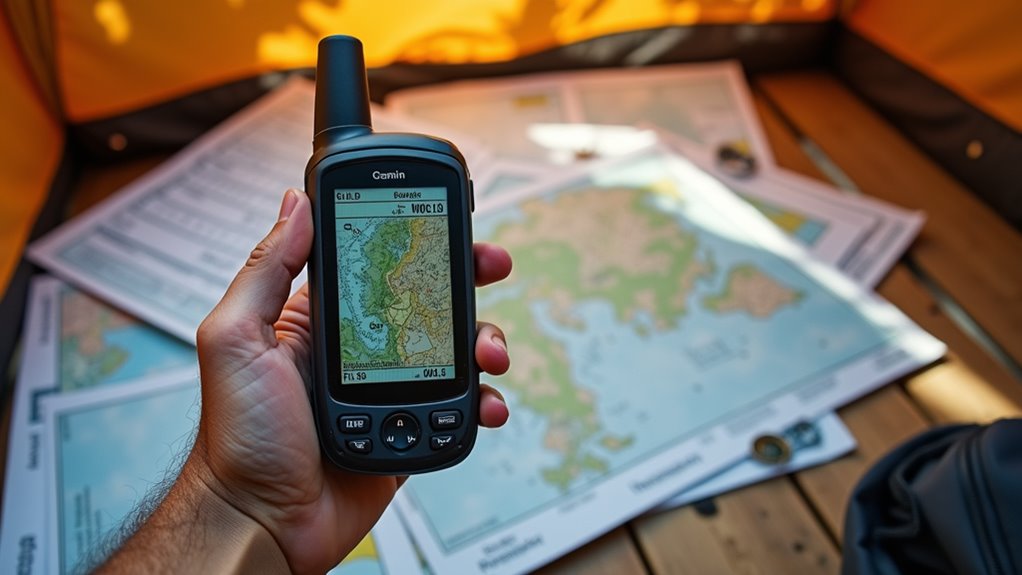
Before you pack a single item or load your car, you’ll want to thoroughly research your chosen campsite and the weather you’re likely to encounter. Check the campground’s website for specific amenities, rules, and terrain details. You’ll need to know if there’s potable water, restrooms, fire restrictions, or elevation changes that could affect your plans.
Weather research is equally vital. Check forecasts for at least a week out, including nighttime temperatures, precipitation chances, and wind conditions. Don’t forget to look at historical weather patterns for that area and season. Mountain weather can change rapidly, while desert conditions vary dramatically between day and night.
This groundwork determines what gear you’ll pack and helps you avoid unpleasant surprises once you arrive. Plus, research potential family camping activities available in the area to help you pack appropriate equipment for entertainment and recreation.
A well-organized gear checklist transforms chaotic packing into a systematic process that guarantees you won’t forget essential items. Start by categorizing your gear into shelter, cooking, clothing, safety, and personal items. Include tent stakes, sleeping bags, camp stove fuel, and headlamps with extra batteries. Don’t overlook basics like toilet paper, first aid supplies, and multi-tools.
Create separate lists for different trip types—backpacking requires ultralight gear while car camping allows bulkier items. Check off items as you pack them, and keep a master list on your phone for easy updates. Test gear before departure to avoid surprises.
Store your checklist digitally so you can modify it based on seasonal needs, group size, and specific activities you’ve planned. When selecting sleeping gear, research the best air mattress options for camping to ensure you get quality rest during your outdoor adventure.
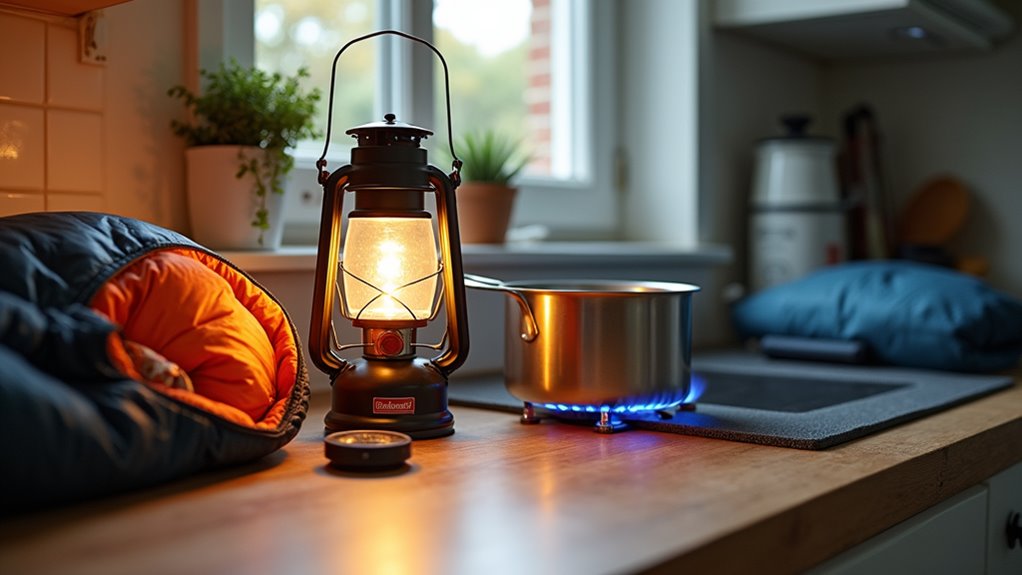
Having your gear list ready means nothing if your equipment fails when you need it most. Testing everything beforehand prevents frustrating surprises at the campsite. You don’t want to discover your tent has a broken zipper or your stove won’t ignite when you’re miles from civilization.
Set up your tent in the backyard to check for missing stakes or damaged poles. Fire up your camp stove and make sure all burners work properly. Test your headlamp and flashlight batteries, replacing any that seem weak.
These tent camping tips are especially crucial for beginners who may not yet recognize the signs of failing equipment.
Here’s what you should always test:
While you might think you’ve calculated your food and water needs perfectly, smart campers always pack extra supplies. Unexpected situations like getting lost, weather delays, or equipment failures can extend your trip.
Pack at least 25% more food than you think you’ll need, focusing on non-perishable items with long shelf lives.
For water, bring extra bottles or purification tablets. If you’re relying on natural water sources, pack backup purification methods since streams can run dry or become contaminated.
Don’t forget extra food for your pets if they’re joining you.
Store surplus supplies separately from your daily provisions. This prevents you from accidentally consuming your emergency reserves early in the trip when you don’t actually need them.
If you’re RV camping in summer, extra water becomes even more critical for keeping cool during extreme heat conditions.
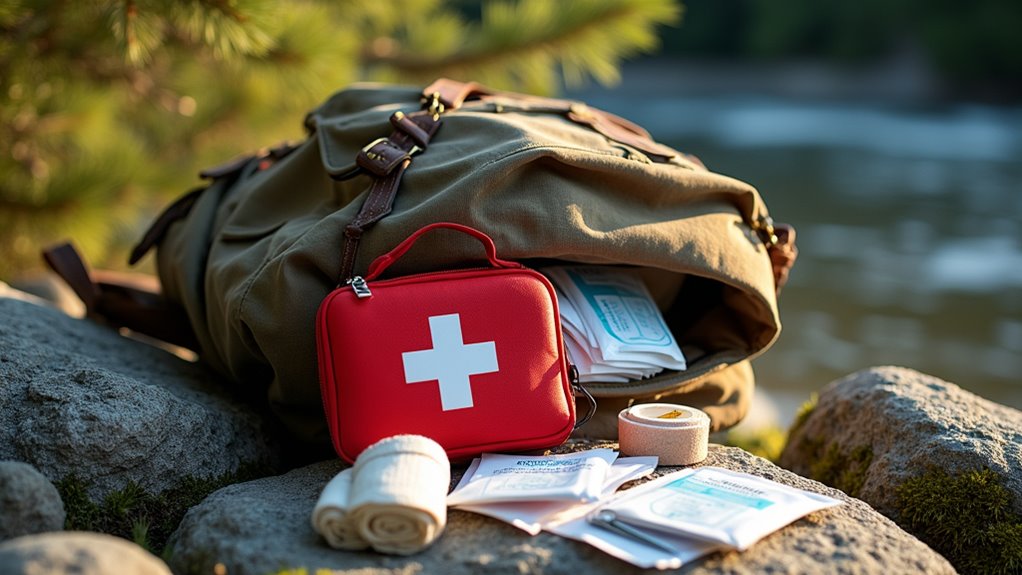
When accidents happen in the wilderness, you’ll be miles away from the nearest hospital or pharmacy. That’s why packing a complete first aid kit isn’t optional—it’s essential.
You can’t predict when someone will cut themselves while preparing food, twist an ankle on uneven terrain, or develop an allergic reaction.
Wilderness emergencies strike without warning—from kitchen cuts to trail injuries to sudden allergic reactions.
Your first aid kit should include these critical items:
Don’t forget to check expiration dates before each trip. Beyond these basics, ensure your kit contains essential first aid items specifically designed for outdoor emergencies and remote locations. A well-stocked first aid kit can mean the difference between a minor inconvenience and a camping disaster.
Beyond medical preparedness, darkness poses another significant challenge in the wilderness. You’ll need multiple light sources to navigate safely after sunset. Pack a reliable headlamp as your primary light—it keeps your hands free for tasks.
Bring a backup flashlight and consider a lantern for campsite illumination.
Don’t rely on your phone’s flashlight; it’ll drain your battery quickly. Speaking of batteries, pack extras for all devices. Rechargeable options work well, but include non-rechargeable backups since charging isn’t always possible.
Consider solar chargers or portable power banks for extended trips. They’ll keep essential devices running when you’re far from electrical outlets.
Test all equipment before leaving home—discovering dead batteries or broken lights in darkness isn’t ideal. A camping heater can provide both warmth and light during cold nights when visibility and comfort become critical safety factors.
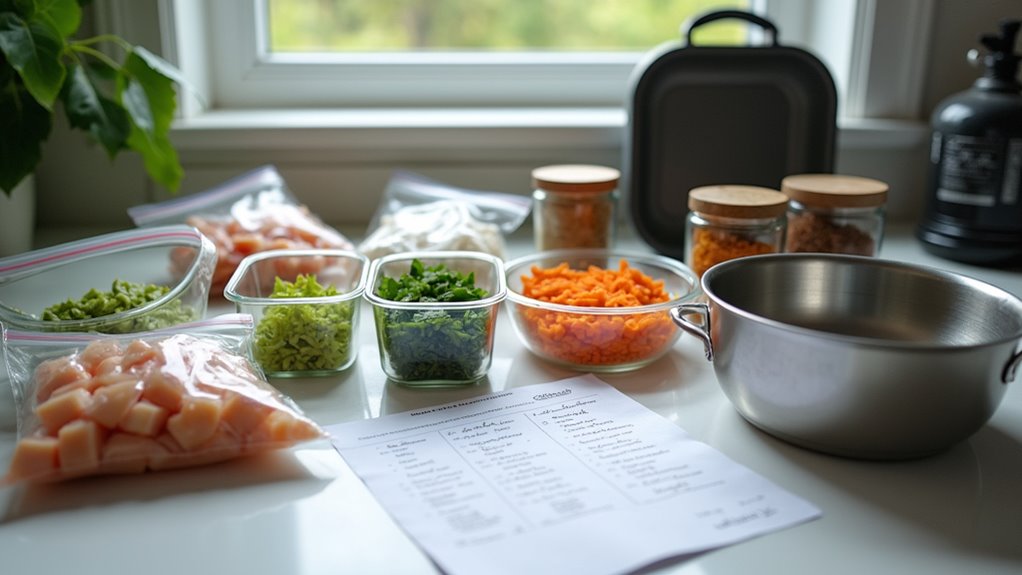
Since hunger strikes at inconvenient times in the wilderness, you’ll want to map out your meals before you leave home. Don’t rely on catching fish or finding berries—plan every breakfast, lunch, and dinner with realistic portions and prep times.
Smart meal planning keeps you energized and prevents costly mistakes:
Test your camping stove and cooking gear at home first. You can also save money on essential cooking equipment by searching for discount camping gear through online retailers and comparison sites.
Although weather forecasts help guide your packing decisions, mountain conditions change rapidly and can catch unprepared campers off guard. You’ll want to pack clothing layers that adapt to shifting temperatures and unexpected weather patterns.
Start with moisture-wicking base layers that pull sweat away from your skin. Pack insulating mid-layers like fleece or down jackets for warmth retention. Don’t forget waterproof outer shells to shield against rain and wind.
Layer smart with moisture-wicking bases, insulating mid-layers, and waterproof shells to handle mountain weather’s unpredictable shifts.
Bring extra socks and underwear—wet feet lead to blisters and discomfort. Pack a warm hat, gloves, and rain gear regardless of the forecast.
Quick-dry hiking pants work better than cotton jeans, which stay wet and lose insulation properties.
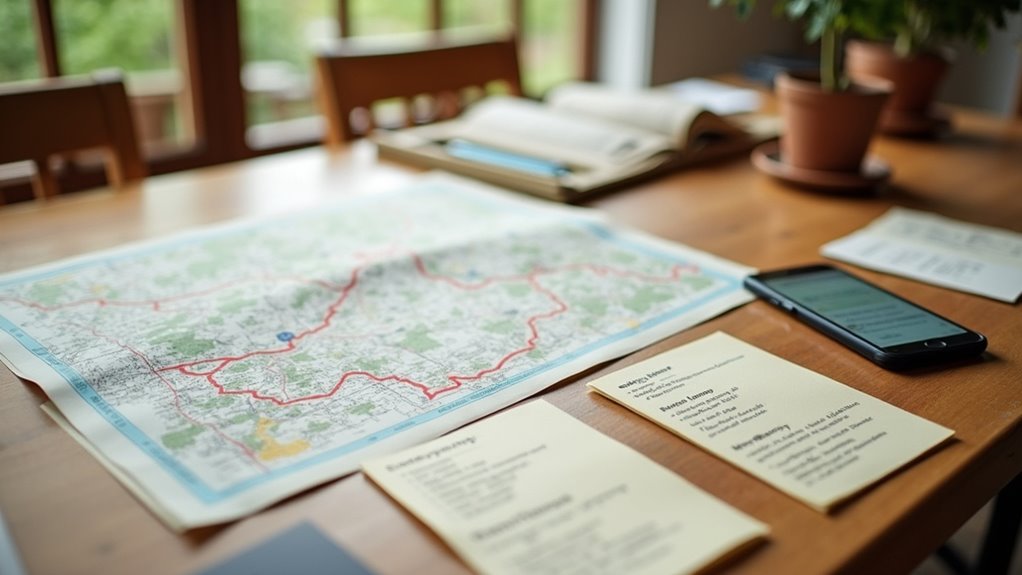
Before you head into the wilderness, you’ll need to create a detailed itinerary and share it with trusted contacts back home. This simple step could save your life if something goes wrong.
Your camping plan should include specific details that’ll help rescuers locate you quickly:
Don’t forget to check in once you’re back safely. Plus, ensure you have the right gear packed in a reliable travel backpack that can handle the demands of your outdoor adventure.
While sharing your plans with others creates your safety net at home, you’ll also need reliable ways to communicate and navigate when you’re actually out there. Pack a GPS device or smartphone with offline maps downloaded beforehand. Cell service isn’t guaranteed in remote areas, so consider a satellite communicator for true emergencies. Don’t forget backup power sources like portable chargers or solar panels.
Bring a physical map and compass as your analog backup. Technology fails, batteries die, and you don’t want to be stuck relying solely on digital tools. Practice using these navigation tools before your trip.
Also pack a whistle for signaling help and consider two-way radios if you’re camping with multiple groups. Test everything at home first.
Stay updated on the latest camping gear innovations, as new communication and navigation technologies are constantly being developed to improve safety and reliability in the outdoors.
Picture yourself confidently setting up camp as golden sunlight filters through towering pines, knowing you’ve covered every detail. You’ll sleep soundly under star-filled skies because you’ve tested your gear, packed emergency supplies, and shared your plans with loved ones. When morning mist rises from the lake, you’ll brew coffee with ease, watching wildlife emerge while other unprepared campers scramble. That’s the peace of mind thorough preparation brings to your wilderness adventure.